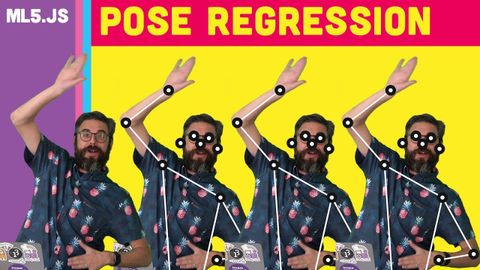ml5.jsを使用しています。PoseNet と ml5.neuralNetwork() を用いたポーズ回帰 (ml5.js: Pose Regression with PoseNet and ml5.neuralNetwork())
林宜悉 が 2021 年 01 月 14 日 に投稿  この条件に一致する単語はありません
この条件に一致する単語はありませんUS /ˈprɑsˌɛs, ˈproˌsɛs/
・
UK /prə'ses/
- v.t.(コンピュータの)データを処理する;処理する;処理する;一連の工程を経る;加工する : 加工処理する;理解する
- n. (c./u.)手続き;一連の行為;方法;訴訟手続き;プロセス (コンピューター)
US /ˈdɛmənˌstret/
・
UK /'demənstreɪt/
- v.t./i.表す;(集会 : 行進などによる)デモをする;証明する : 実証する;実演する : 実際にやって見せる
US /ɪmˈpruv/
・
UK /ɪm'pru:v/
エネルギーを使用
すべての単語を解除
発音・解説・フィルター機能を解除

